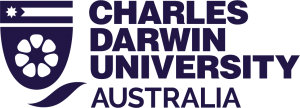Introduction
This feature image of a fake duck shows just how good some fakes can be.
In recent times we’ve become accustomed to hearing about “fake news”. Myths, half truths and fake news abound in every field: politics, science, health and education to name a few.
The skills to identify what’s true and what’s not have never been more important. In this Thing, we’ll explore why it’s important, particularly for educators, to be alert for misinformation, and introduce a simple check – the CRAAP Test.
Try
Try a reverse image search. Take a screen shot one of the 23 Things feature images and see where else it has been used. Use Google follow these instructions or use Tineye. (10 minutes)
Pick a current article in your field and apply the CRAAP Test – how does it stand up? (30 minutes)
In Alice Springs? Participate in one of the Wikipedia Workshops and learn how to edit Wikipedia.
More Detail
When you watch something on the news or a documentary, or read something online, in the paper, in a journal or magazine, what filters do you apply to determine whether that information is true and reliable? Many consider the mainstream media to be inherently biased to the political right or left, and if that’s the case, how can we be sure of getting all the facts, rather than a one-sided view? “It’s on the internet therefore it must be true”, is a common belief. Many people will turn to Google, Wikipedia or non-tracking browsers like DuckDuckGo to search for information, but how reliable are they?
Wikipedia itself, does not claim to be a reliable source, given that anyone can edit, and is often discredited by academics. Wikipedia reviewers note poor quality of writing, a lack of structure and missing content (Hilles, 2014). While Wikipedia is not accepted as a credible reference with most universities, many educators acknowledge it’s value as a starting point for locating basic information.
Through a literature review aiming to define “fake news”, Edson et.al. (2018) identify many different scenarios. There are sites that misinform through accidental sharing of false information, whilst other disinform – deliberately creating false information. Additionally, articles intended as satire or parody can easily be misconstrued and disseminated as fact.
This two minute video from QUT steps through an evaluation process to check how information stacks up for currency, relevancy, authority, accuracy and purpose – known as the CRAAP Test. (Transcript available)
Note: CDU staff/students can contact the Library for assistance via email: askthelibrary@cdu.edu.au
Myths in Education
In education, as in other fields, theories which were once commonplace have been found to have little research and are now widely discredited.
Bruyckere, Kirschner, and Hulshof (2015) discuss many of the more common myths and urban legends in education in their book Urban Myths about Learning and Education. They explore topics including learning styles, left/right brain theories, brain-training programs, benefits of classical music, and learning while sleeping, as well as discussing the important role of educators in not perpetuating myths.
Educators should try not to be fooled by unsubstantiated myths, by checking the validity of a claim and the objectivity of its author, and avoid passing myths on to others. Bruyckere, Kirschner, and Hulshof (2015)
Educators have a responsibility to ensure the information we provide to our learners is from recognised, reliable sources and checked for authenticity. As described in the video, we can look at who the author is, investigate their credentials, check whether the information is current and compare against other reliable sources.
In recent years the concept of the “flipped classroom” has become popular, with many educators reporting student benefits. Using this model students read or watch videos before class and are then able to spend class time in interactive activities. However, in one randomized trial, researchers found little to no benefit, concluding that educators should exercise caution in implementing a flipped classroom model (Setren, Greenberg, Moore and Yankovich, 2019). This one example demonstrates the importance for educators of maintaining currency and reading widely to ensure we are not unwittingly contributing to and disseminating misinformation.
Identifying misinformation
News items intended as disinformation are often accompanied by images carefully selected to give “authenticity”. A useful tool to check is the reverse image search, which allows for searching by image rather than by text. This search report includes where that image has been used previously and can help to authenticate or refute information. A search of the feature image used for Thing 2 shows this same image used in a variety of locations. Additionally, fact-checking websites such as Snopes can be useful to identify urban legends or misinformation.
Whilst social media is often blamed for the spread of misinformation, a robust Professional Learning Network (PLN) can assist educators by providing a place to question and learn. The many Edchats on Twitter, or professional groups on LinkedIn are great places to begin to develop such a network. See Thing 17 for tips on using Twitter and Thing 5 for Building a PLN.
Share
What misinformation have you come across recently? What methods do you use for myth-busting?
Reminder: Track your Professional Development with this form. Record of evidence form
References
Photo by Phil Hearing on Unsplash
Thing 20 written by Sue Tucker
Hilles, S. (2014). To Use or Not to Use? The Credibility of Wikipedia. Public Services Quarterly, 10(3), 245-251. doi:10.1080/15228959.2014.931204
Setren, E., Greenberg, K., Moore, O., & Yankovich, M. (2019). Effects of the Flipped Classroom: Evidence from a Randomized Trial. Retrieved from http://seii.mit.edu/research/study/effects-of-the-flipped-classroom-evidence-from-a-randomized-trial/
Tandoc Jr., E. C., Lim, Z. W., & Ling, R. (2018). Defining “Fake News”. Digital Journalism, 6(2), 137-153. doi:doi.org/10.1080/21670811.2017.1360143


